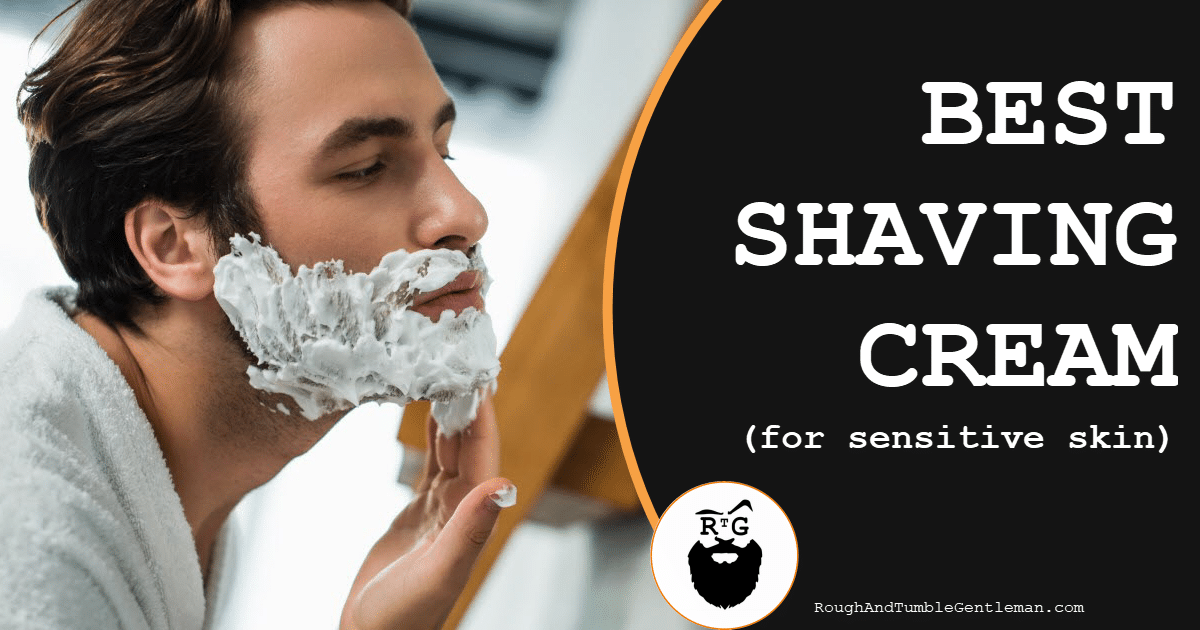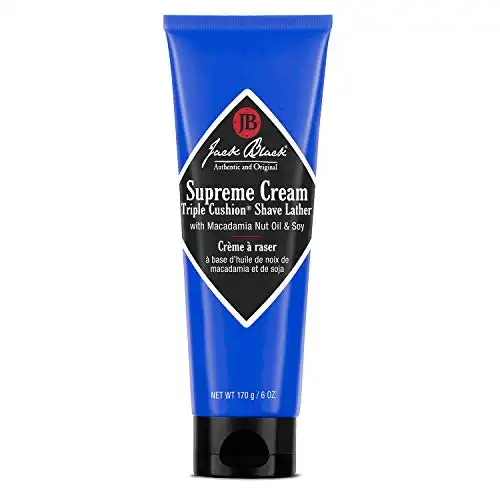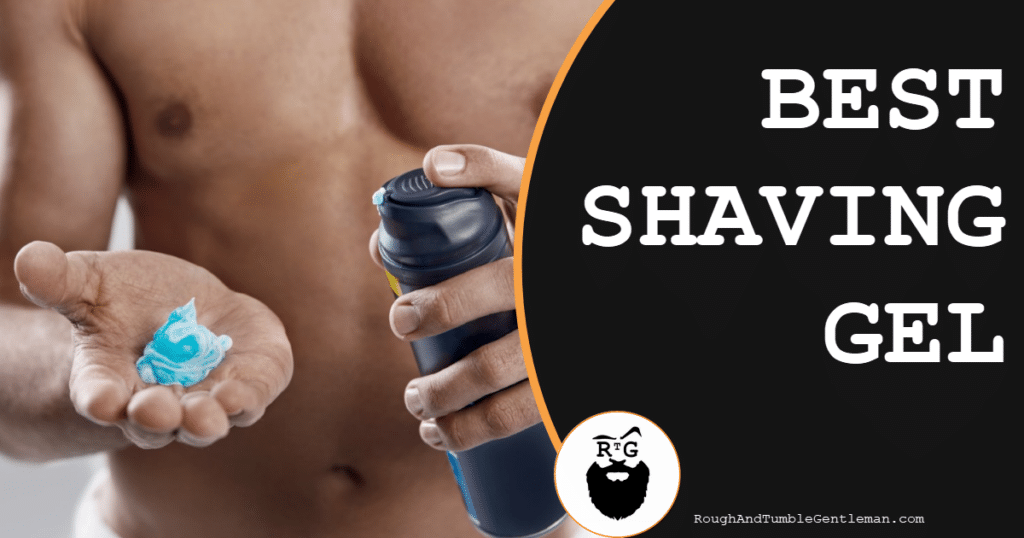The worst part of shaving is when the products you use irritate or damage your skin. Truly, those of us with sensitive skin have had to suffer in silence for too long. Thankfully, there are now some great products you can use to take care of your face (and other areas) when shaving sensitive skin. Today, I’m going to talk all about what to look for when choosing the best shaving cream for sensitive skin.
In case you’re looking for a personal recommendation, my pick for the best shaving skin for sensitive skin is Jack Black Supreme Cream Triple Cushion Shave Lather. It contains natural ingredients such as jojoba oil, soybean oil, and organic edelweiss extract to soothe and moisturize your skin.
"For sensitive skin, this hydrating lather is the best we've ever used. We highly recommend it." - RTG Editorial
Gents, we are reader supported. If you click on a link we may shave a small commission at no additional cost to you.
But I know what works for me may not work for everyone.
In today’s article, I’ll dive deep into how shaving cream works and why some work better than others for sensitive skin. I will also share tips and advice from the top blogs and publications online to help you choose the absolute best shaving cream for your sensitive skin.
Let’s get into it!
What is a Shaving Cream Supposed to Do?
Shaving cream has many purposes, but the first we’re going to discuss is its ability to trap in heat and moisture. Showering with hot water causes your pores to open and the skin holding your hair in place to loosen.
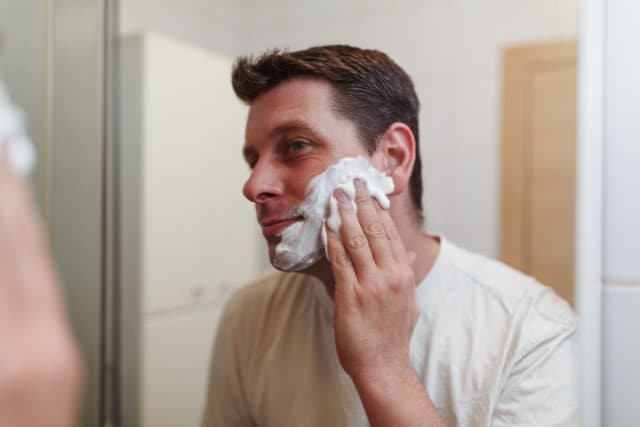
When you soften your skin in this way, shaving won’t pull and tug at your skin the way it would otherwise.
Why We Use Shaving Cream (and How it Works)
Shaving cream retains the heat and traps it under the cream, allowing your skin to remain warm long after you step out of the shower.
Its other purpose is moisturizing your skin, increasing its slickness and decreasing its resistance to the razor.
Decreasing its resistance may not sound like a good thing, but the ideal situation when shaving is not to allow the blade to get caught on the skin instead of hair follicles.
A properly lubricated skin will be too slick for the razor to tug at your skin. Instead, the razor will pass over your face without leaving blade divots or blades in your skin.
This also lowers the chance of irritation or razor burn. If you’ve ever felt itchy or seen your skin turn red after a shave, it’s because the blade got caught on your skin somewhere.
Reduce Friction
Rubbing any two substances together causes friction, but the dryer and flakier your skin, the worse the friction will be between your skin and the razor. Shaving cream moisturizes the skin itself, reducing the likelihood of this irritation.
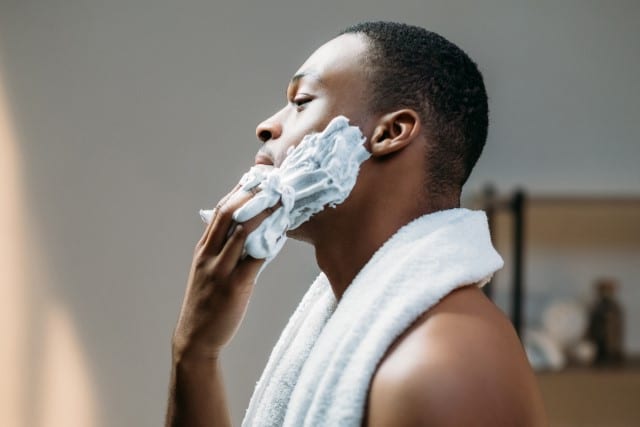
When your skin dries out and gets uncomfortable and tight, your hair tends to bend and curl a bit inwards. This means it’s much harder to get a clean cut.
You can loosen this grip by using shaving cream. The cream will help to open your pores, and it may also straighten out your hair before you shave.
The result? You don’t have to press the razor so tightly to your skin, and this cuts down on friction.
More importantly, it helps you to get a more uniform shave across your skin if your hairs aren’t curled up and dry.
As Gilette.com mentions, shaving cream also helps you reduce the number of passes you need.
This is important, as the more passes you need to use, the more chance there is of friction and irritation.
Tracking Your Progress Visually
Another great thing about shaving cream is that when you use it, it’s easy to visually track each shaving stroke.
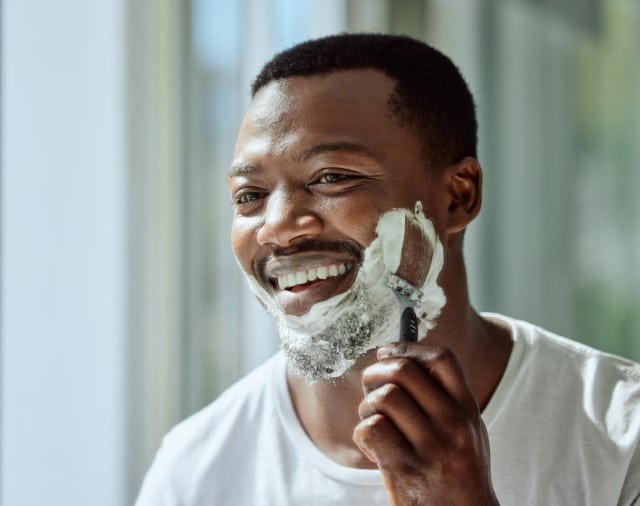
Also, it allows you to get your shaving done with the minimal possible number of strokes.
Adds Moisture to Your Skin
And finally, we know we touched on it before, but shaving cream does more than moisturize your skin while you shave.
If you shave after a hot shower, your shaving cream will be even more effective at helping to soften the skin and give it a refreshed feeling.
Your hair should also become softer, making cutting easier.
The Different Types of Shaving Creams
Most shaving products fall into roughly one of five categories.
Moisturizers
In a pinch, you can use a moisturizer as a shaving cream.

Remember, one of the most important functions of a shaving cream is to form a smooth layer for the razor to glide across, reducing friction.
In a pinch, moisturizers can function in this way. Just don’t expect them to be perfect, to stand your hair on end for a cleaner shave, or do really anything that reduces the chance of nicking or cutting.
Shaving Oil
Shaving oil is a popular alternative to traditional shaving cream. Pre-shave oils are the most common and can be mixed with shaving creams, but there are many oils designed to be used for the full shaving process.
The oil is especially slick and great at preventing nicks, it requires only a few drops per shave, it is nearly scentless, and the small bottle is easy to store.
On the other hand, it won’t moisturize your skin, there is no lather, and your shave will be extremely close to the skin.
Shaving Foam
Many men use shaving foam instead of shaving cream. However, it does have some disadvantages.

Many shaving foams can dry out the skin and they often have strong fragrances that can cause allergic reactions. Also, shaving foams tend to come packaged in aerosol cans that use propane.
One of the attractive things about shaving foam, however, is how you get a thick layer of foam right out of the can. They’re easier to apply than shaving cream, and much easier to use than oil.
Shaving Cream
In our opinion, shaving cream is the best option. You can buy shaving creams in tubes, and you can apply them with your hands.
Shaving cream is a great pick for travelers and anyone who wants a quick and easy shave.
You can find shaving creams with organic ingredients. The main aim of these products is to moisturize your skin, softening it before the shave.
Just like RealMenRealStyle, we recommend shaving cream under most circumstances, and our favorite for sensitive skin is the Jack Black product we mentioned above.
Shaving Soap
On the opposite end, we have a recommendation from Bespokepost.com: shaving soap.
When you mix it properly, shaving soap has a rich lather. It moisturizes as well as performing as a natural shaving cream, and it will remove oils from your facial hair.
However, the exceptional effects of shaving soap comes at the cost of some inconvenience. You’ll have to use mugs, brushes, and tools to apply this product, and you need a place to store all of that.
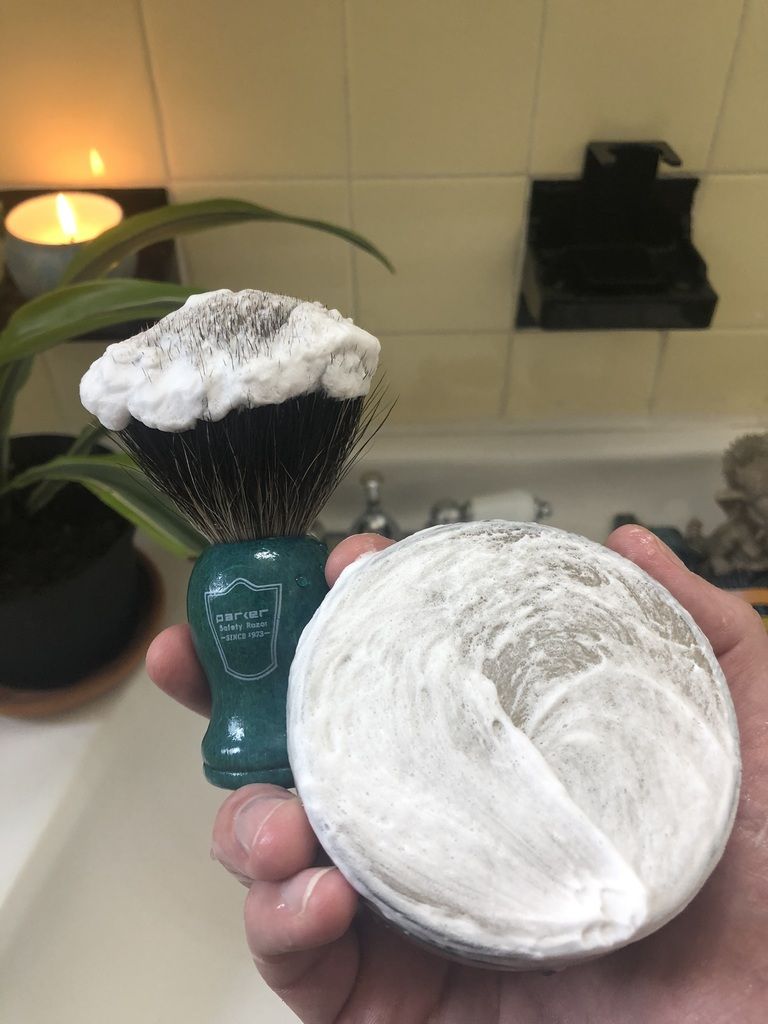
It takes quite a bit of time to use this product, too. You have to mix the soap to the right consistency yourself.
Personally, I enjoy that process – it allows me to shut the door and leave the kids, work, and all my responsibilities behind for 10 or 15 minutes – but others may find it time consuming and cumbersome, so it’s important to point this out.
Shaving Butter
The final type of shaving product we’ll mention here is shaving butter. RealMenRealStyle has talked about this little known option.
Shaving butter is a mixture of shaving cream and shaving soap, and its consistency is something like butter.
You can literally push this stuff around on your face like a semi-solid. This is a little too weird for some buyers, but you might like it.
You don’t have to mix it up like shaving soap, and yet you can apply it with your hands like shaving cream. In some ways, it’s the best of both worlds.
RELATED: 3 DIY Shaving Cream Recipes to Try at Home
Shaving Tips for Guys with Sensitive Skin
If you have sensitive skin, make sure that you only buy and use shaving cream that is labelled as formulated for sensitive skin.

WebMD points out that shaving creams for sensitive skin are exactly what they say on the label.
It’s important to get a shaving cream made specifically for sensitive skin, as other creams might include drying ingredients and chemicals that will cause irritation.
If you have sensitive skin, don’t use typical soap bars or products that lather on your face.
Use your facial cleanser about five minutes before shaving. Let it soak in to soften your hair.
Use hot water to open up your pores and reduce tugging. Then, apply cold water after a shave to reduce irritation and redness.
The wider your pores, the weaker their grip on your hair will be.
Whether it’s a hot compress or a warm shower, heating your skin will make it easier to cut your hair without irritating the skin beneath it.
WebMD suggests cold water, on the other hand, acts like a medical compress and reduces irritation after shaving like an injury.
If you have sensitive skin, you should shave along the grain to reduce the risk of ingrown hairs and irritation.
Cut With the Grain
We know cutting against the grain can get you a closer shave, but the difference is negligible. And pressing into your hairs that way can cause the ends to curl so that as they grow back, they dig into your skin and can become ingrown.
Cutting with the grain when you shave also causes less tugging on hairs, which pulls less on the skin in turn, and reduces inflammation.
Remember, you may need to replace your razors as regularly as once every two shaves. So, you probably shouldn’t buy expensive multi-blade razors. It’s better to use simple one-blade razors and buy quality razor blades.
Some men believe that more complex and impressive razors mean they’re better, but that’s not true. Added blades don’t increase a razor’s lifespan.
Moisturize your skin regularly even when you aren’t about to shave. It makes your skin softer and smoother, and that is important for sensitive skin.
Of course, moisturizing will alleviate dry skin. As well as looking unattractive, dry skin tends to clump together in wrinkles.
When this happens, passing a razor over your face can more easily cause irritation and redness.
Something else to remember if you have sensitive skin is to avoid using cheap shaving foams and certain kinds of chemical sunscreen. Keep your skin as healthy as possible overall, so you are less likely to cause irritation when shaving.
Groominglounge.com suggests using products with more natural ingredients if you can. Avoid using products that contain skin irritants.
Tips for Avoiding Razor Burn
Make sure you take steps to avoid ending up with razor burn when you shave.
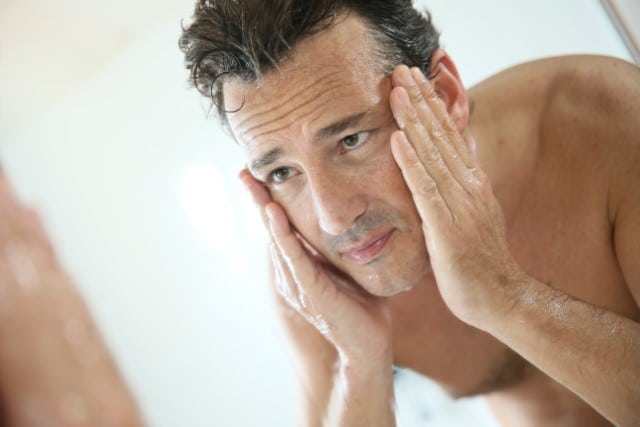
Put simply, razor burn is severe irritation that shaving can cause on your skin if you don’t take the right precautions.
Have you ever had a skin rash, otherwise known as contact dermatitis? That is what razor burn looks like.
Some of the potential symptoms of razor burn include stinging and even burning, as well as itching and redness.
If you have severe razor burn, you will find that it can be quite painful. Men with sensitive skin are most prone to ending up with razor burn, so you should take extra precautions to prevent it.
Here are some things you should do to help avoid ending up with razor burn.
You should begin by exfoliating and washing your skin to remove dead cells, which exposes more of your hair.
This will make it easier for your razor to cut your hair without you having to push it down on your skin.
Also, exfoliation will help to loosen up the hairs, making them stand on end rather than curl towards your face. This will make it much easier for your razor to find the hairs and cut them. You’ll certainly end up with a cleaner shave.
You should also consider using a conditioner or product that softens hair, as beard hair can be tough to cut if you don’t prepare it before a shave.
How to Treat Razor Burn
If you do ever end up with razor burn, you’ll have to take certain steps to alleviate the redness and irritation.
You should cool down the skin by splashing on cool water and/or applying a cool washcloth. You can also apply a soothing moisturizer formulated for sensitive skin.
Aloe vera is also a great remedy for razor burn. In fact, just putting on some aloe vera may get rid of your razor burn symptoms within as little as an hour.
Use a Badger Brush
As we learn in the ArtofManliness, using a badger brush or something similar can also be a big help. If you apply shaving cream with your hands, you’re really pressing down on your hair from the outside and pushing it a bit flat.
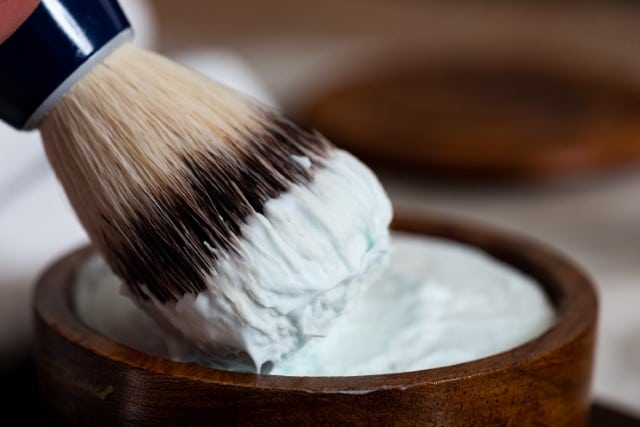
The bristles of a brush tend to get under your hair, lifting it up and away from the skin. They also press the cream down below your hair as you work, creating more layers between your skin and the razor when you get to work.
Use a Safety Razor
We want to emphasize again too that the right tools make all the difference. A quality safety razor or a simple, sharp blade will cut better than a fancy one you reuse multiple times.
Here are a few examples of safety razors I own:
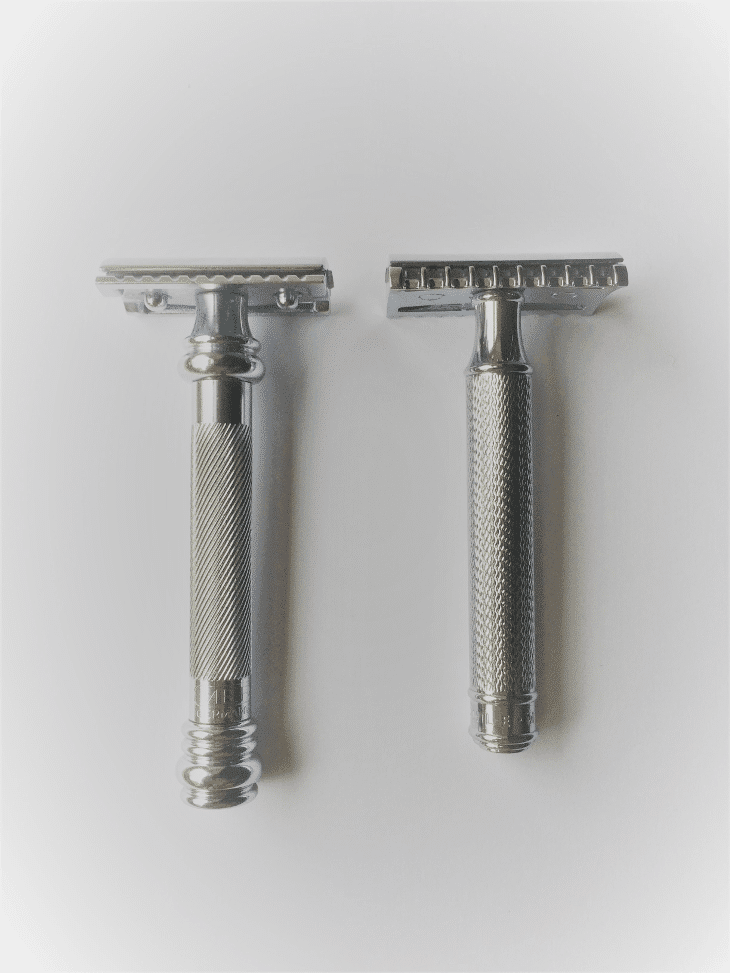
If you are reusing a razor, before you shave, rinse your blade and apply a simple disinfectant like rubbing alcohol.
After you are done shaving, and after every several strokes while you are in the process of shaving, rinse the blade to remove the accumulated hair and skin cells that can dull your cuts.
Improve Your Technique
Your technique has a huge influence on whether you end up with razor burn. RealMenRealStyle puts it best when they say that the leading cause of razor burn is simply that people shave the wrong way.
Your skin is more delicate than you think. You shouldn’t push too hard with your razor.
You should make short passes with your razor, as long, sweeping passes can result in cuts and irritation.
Wash with Cold Water Afterward
Razor burn is a natural reaction to injury, just like a bump forming after a bee sting. Just like most injuries, the best way to deal with the swelling is to put something cold on it afterward.
We recommend washing your face with cold water, as well as applying a moisturizer that is suitable for sensitive skin.
Try Shaving Balms or Creams
When water isn’t enough, we recommend something like a shaving balm or razor burn cream. These products contain medicinal ingredients intended to reduce swelling and irritation, as well as promote skin growth and healing.
Balms in particular usually contain a moisturizer that refreshes the skin and prevents drying caused by irritation.
They are also usually scentless, which reduces the chance of having an allergic reaction to the balm.
Sensitive Skin Care Tips: Do’s and Don’ts
If you have sensitive skin, there are plenty of Dos and Don’ts you’ll have to keep in mind.
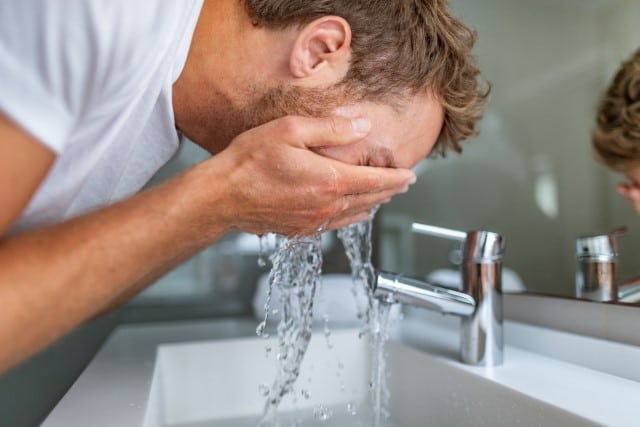
Here are some of our top tips, including things you can do to help your skin. We’ll also talk about potential problems you may not have thought of yet.
If you have sensitive skin, Don’t think you need to use expensive products to wash your skin on a daily basis. In fact, consider taking the opposite approach. Just some warm water is sometimes enough.
Get a moisturizer formulated for sensitive skin. Make sure that it isn’t too acidic.
Go Unscented & Natural
Do consider buying scentless or natural skin care products. As Healthline points out, many skin conditions such as eczema may be aggravated by what you put on it.
Be careful about the detergent you use for washing your clothes. It’s best to choose one that is free of fragrances and dyes.
You can also look for products made from natural ingredients. For example, you can find fragrance-free soaps made from plant-based sources.
Test Before Using (and wait for a reaction)
Do remember to test the products you want to use on your skin.
Use a little bit on a tiny area of your face and check for any reactions.
Alternatively, you could test it behind one of your knees before you add it to your daily routine. Wait at least 24 hours to see if a reaction happens.
Limit Hot Water Use
Don’t use hot water to wash your face or skin all the time. Hot water is useful before exfoliating or shaving because it causes your skin cells to spread out and soften, making them weaker yet more malleable.
If you have sensitive skin, use warm water instead of hot when washing. Your skin will hopefully start to recover from the damage you’ve done to your skin barrier (explained in this study) with those excessive temperatures.
Take Care of Your Skin in the Great Outdoors
You should also remember to take care of your skin when you’re outdoors. Find a sunscreen that is formulated for use on the face.
If you have an allergy to chemical sunscreens, you should be able to find a physical sunscreen that you can wear.
Final Thoughts: Best Shaving Cream for Sensitive Skin
As we’ve shown here, men with sensitive skin have plenty of options when it comes to shaving products. The important thing is to understand your skin and avoid causing unnecessary irritation.

Use the product recommendations we have provided to figure out which shaving cream and other products will give you the perfect shave.
Overall, as I said earlier, I think Jack Black Supreme Cream Triple Cushion Shave Lather is the best pick.
Michael Morris is the head writer here at Rough and Tumble Gentleman. He's got a ducktail beard and loves Brazilian jiu-jitsu. He's married to the woman of his dreams and lives in Brooklyn, NY.

